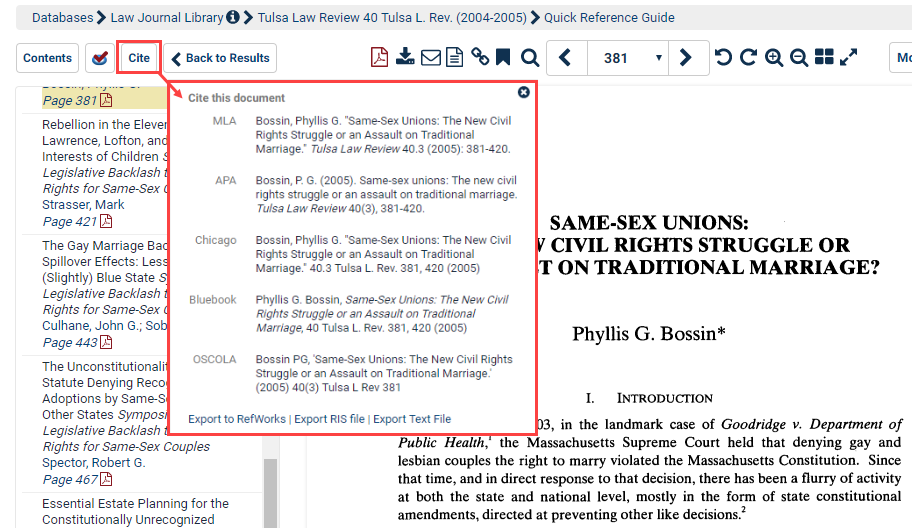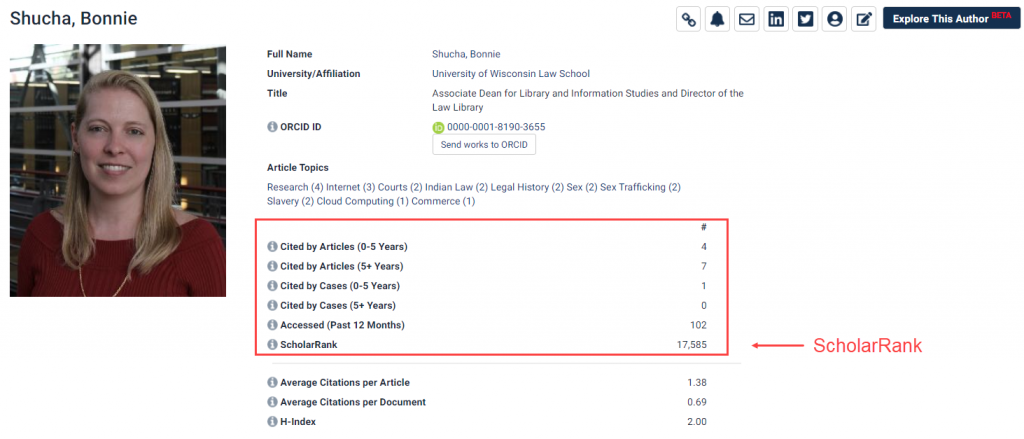If you know anything about HeinOnline, you probably know about the Law Journal Library. If you use HeinOnline regularly, you probably make the Law Journal Library your first stop for researching any topic.
How do we know this? Are we omniscient? Can we read minds? Of course not. That would be ridiculous.
We know because this unique, image-based (yet fully searchable) database is like having an entire print library at your fingertips. On top of that, it contains artificial intelligence tools and research aids specifically designed to help you use it. Why wouldn’t it be your #1 resource?
This May, the Law Journal Library will turn 20 years old. At its launch, the resource contained just 23 law journals and approximately 250,000 pages. With the addition of ten new journals last month, the Law Journal Library now contains more than 2,800 journals spanning more than 38 million pages and more than 100 topics. My, how she’s grown! #Proud.
Celebrate this milestone by discovering ten things you may not have known about HeinOnline’s Law Journal Library.
10 Things You Might Not Know About the Law Journal Library
1. It’s not just a law journal library.
Yes, we call it the Law Journal Library. No, it doesn’t just contain legal content.
The Law Journal Library got its name because it was initially launched as a small collection of law reviews. As the database has grown over the years, we’ve added millions of pages of content relating to other disciplines. Today, the “Law” Journal Library is really a multidisciplinary collection of both academic and commercial material. Our more than 2,800 journals cover a variety of subjects, including:
- Criminal Justice
- Political Science
- Technology
- Business
- Public Health
- Immigration
- Economics
- Foreign Policy
- Religion
- World History
- Psychology
- Medicine
2. Its coverage is as comprehensive as possible.
When we created the Law Journal Library, it was our goal to provide access to law reviews all the way back to their inception. As we’ve expanded the database, we’ve maintained this goal for our multidisciplinary content, as well. Out of the 2,800 journals, all date back to inception, and more than 2,350 include coverage to date with no delay.
3. It contains commercial content.
In addition to hosting a number of academic journals, the Law Journal Library actually contains commercial content as well. Check out just a few of the publishers with whom we partner:
4. It contains many foreign-language journals.
Though HeinOnline is based in the United States, we seek to provide access to scholarly journals from any country. Out of the 2,800 journals that now reside in the Law Journal Library, 40% are published outside the U.S. As many of these are published in a language other than English, we’ve coded each journal by the primary language in which it was published. Learn how to filter Law Journal Library results by language here.
5. All of its content is categorized by topic.
Speaking of coding our content for easier access, we’ve also coded every article in the Law Journal Library by topic. Through human and artificial intelligence identification, we’ve extracted more than 1,500 topics* from our Law Journal Library material and assigned one or more of those topics to each article. As a result, when performing a search or viewing an article, users will see assigned topics displayed.

*As we continue to enhance the research experience in HeinOnline, we will be organizing these topics under a master list of 104 subjects. Stay tuned for more updates on HeinOnline’s topics in the upcoming months.
6. It uses artificial intelligence to help you search.
In recent years, HeinOnline has enhanced the Law Journal Library by releasing natural language processing and machine learning tools that vastly improve the discoverability of relevant content. Check out a few of them below:
More Like This
The More Like This button allows users to find similar articles based on the current article they are viewing. Use this feature to discover “interesting words” within the article, as determined by an algorithm, and view a list of similar articles based on the words. Learn more.
Keyword Search Builder
The Keyword Search Builder can be found within the Advanced Search option of the Law Journal Library. Utilize this tool to assign weights to various keywords in your search. Learn more.
Topic and Entity Extraction
Remember how we mentioned that we topic-code each article? Not only is this helpful for categorizing, but it’s also an incredible tool for searching. Extracting the topics and other entities from an article (such as mentioned locations, people, or organizations) allows users to further filter their searches and see the most relevant results. Learn more.
7. It generates citations so you don’t have to.
Located above the table of contents of any document in the Law Journal Library is the Cite button. This tool provides the document’s citation in multiple citation formats, including Modern Language Association (MLA), American Psychological Association (APA), Chicago, Bluebook, and the Oxford University Standard for the Citation of Legal Authorities (OSCOLA). Users can then export their journal citations to Refworks, to Endnote, or as a Text File from the same location. Can’t get any easier than that!

8. It measures the scholarly influence of its content for you.
When using journals and other secondary sources for research, it’s essential to know exactly how authoritative the source is in the context of the related field. To assist researchers with this task, HeinOnline has created ScholarCheck, a series of tools and features that determine which articles have had a heavy influence on the subject in question. Among its many functions, ScholarCheck:
- Analyzes the most-cited journals, articles, and authors
- Enables users to view and access articles cited by other articles
- Enables users to see how many times an article has been accessed by other HeinOnline users within a rolling 12-month period
- Provides inline hyperlinking so users can quickly access related material across HeinOnline and Fastcase content
- Allows users to sort search results by most-cited and most-accessed content
Learn more about this feature.

9. It extracts and profiles every single author published in it.
Every author featured in the Law Journal Library has an author profile page. This not only makes it easy for authors to showcase their scholarly writing, but it also helps researchers learn more about the qualifications, interests, and other works of an author they enjoyed. Author profile pages can be found by clicking any hyperlinked name within an article or search results. Learn more about author profile pages.
10. It tracks and ranks every single author according to scholarly influence.
Last, but definitely not least, HeinOnline has combined the ScholarCheck tool and author profile page feature to create ScholarRank, an overall author ranking based on the calculation of five HeinOnline metrics. The final calculation places the author on a scale compared to every other author in the Law Journal Library. Users can view an author’s individual rankings on each author profile page, and then view a list of the most scholarly authors in HeinOnline based on ScholarRank’s calculations.

Want to learn even more about the Law Journal Library? Dive into this dedicated LibGuide:
Like what you see? Subscribe to the HeinOnline blog to receive updates right to your inbox.



